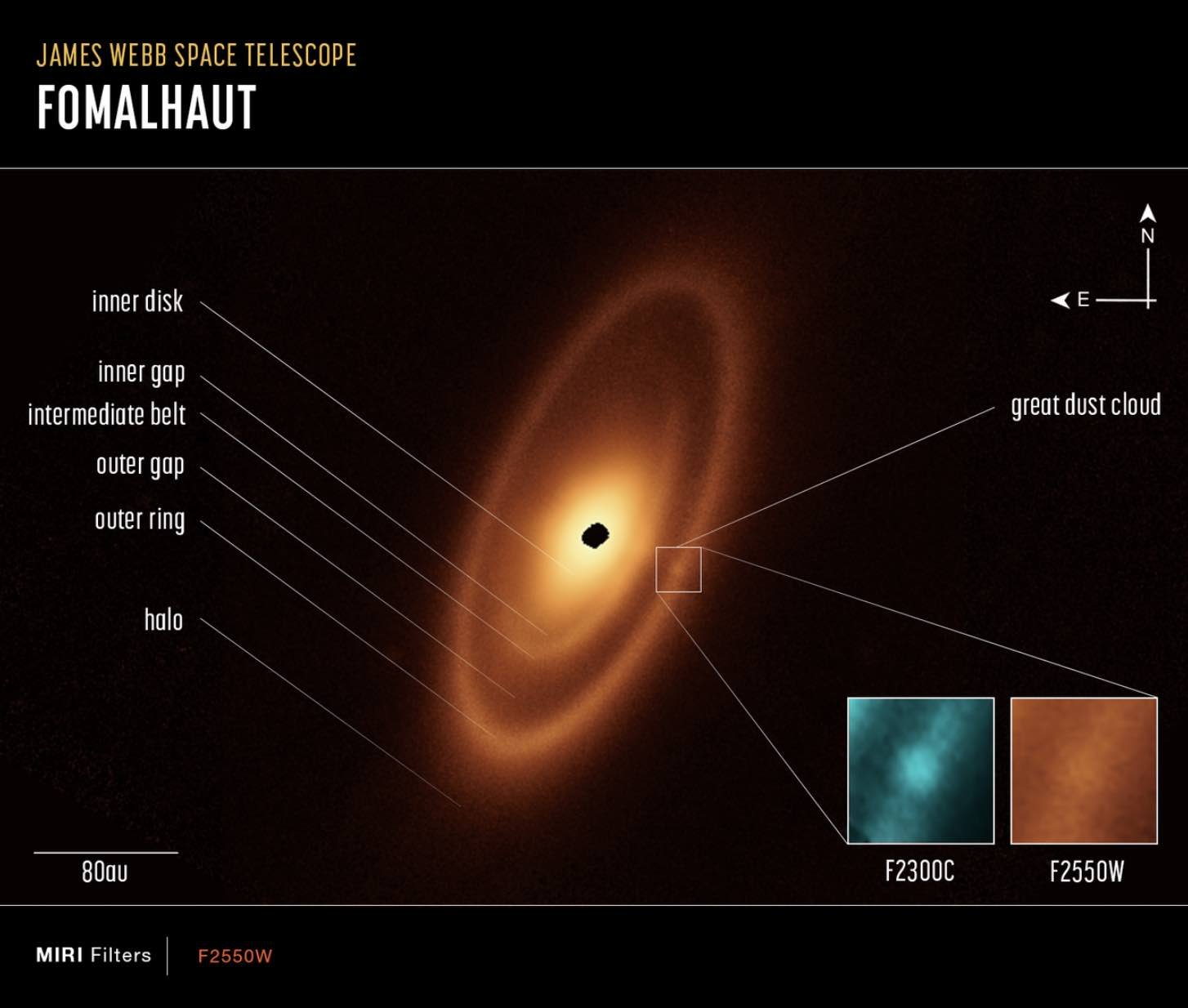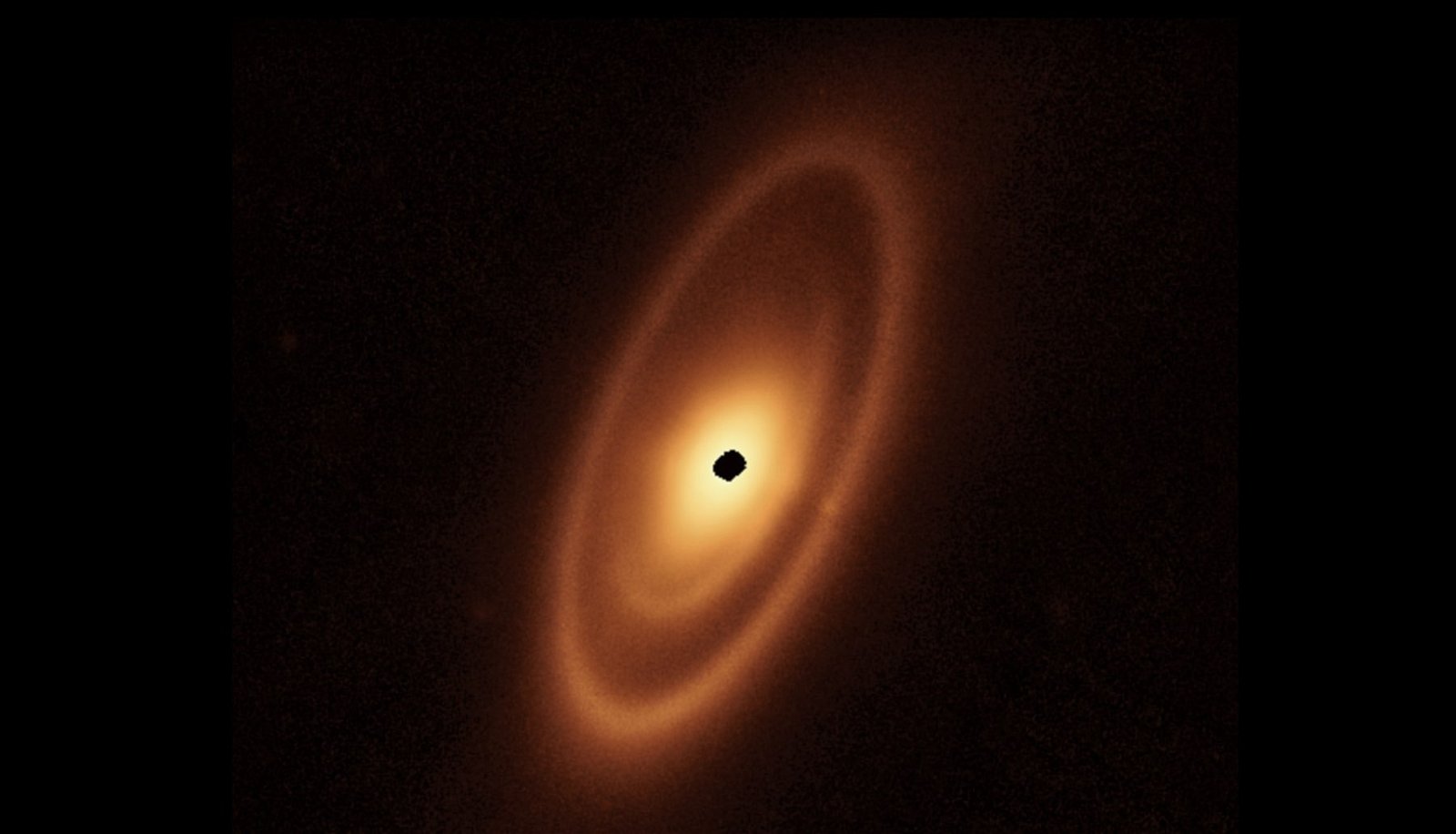Astronomers attempting to study the first asteroid belt ever seen beyond our solar system have found more than they expected, which included a series of glowing discs encircling the star Fomalhaut, according to new research conducted with the James Webb Space Telescope’s Mid-Infrared Instrument (MIRI).
The brightest star visible in the “Southern Fish” constellation Piscis Austrinis, Fomalhaut is a relatively young class A star located around 25 light-years from Earth’s Sun.
While attempting to detect the warm regions of dust encircling the star using Webb’s MIRI instrument, astronomers were treated to more than they bargained for. In fact, the telescope’s imagery revealed far more complex structures encircling Fomalhaut than our own solar system’s asteroid and Kuiper belts.
According to NASA’s Jet Propulsion Lab (JPL), a trio of nested belts was detected around the star, sprawling as much as 14 billion miles outward into the surrounding space.
Although the outermost belt was already known to astronomers, University of Arizona team member Schuyler Wolff said the new images allowed the team to observe inner belts that previously had not been visible.


Based on vivid new Webb imagery, the outermost belt is estimated to be close to double the size of the region beyond Neptune that comprises the Kuiper Belt, while the newly discovered innermost belts, appearing as vivid glowing discs in the Webb images, had never been seen previously.
University of Arizona, Tucson, astronomer András Gáspár characterized Fomalhaut as “the archetype of debris disks found elsewhere in our galaxy,” noting the similarity between the asteroid and cometary debris it is made of “to those we have in our own planetary system.”
“By looking at the patterns in these rings, we can actually start to make a little sketch of what a planetary system ought to look like,” Gáspár said, “if we could actually take a deep enough picture to see the suspected planets.” Gáspár is the lead author of a new paper detailing the new findings.
Although the dusty glowing belts surrounding Fomalhaut are new sights to the eyes of Earthlings, Fomalhaut is well known to regular sky watchers as one of the brightest stars in the night sky.
In the past, only the outermost disc encircling the star had been observed by the Hubble Space Telescope and Atacama Large Millimeter/submillimeter Array (ALMA).
According to Wolff, further study of the spaces between the rings could lead to even more surprising discoveries.
“That structure is very exciting,” Wolff said in a statement appearing at NASA’s JPL website, “because any time an astronomer sees a gap and rings in a disk, they say, ‘There could be an embedded planet shaping the rings!’”
Gáspár, Wolff, and the team’s findings are to be published in the journal Nature Astronomy.
Micah Hanks is the Editor-in-Chief and Co-Founder of The Debrief. He can be reached by email at micah@thedebrief.org. Follow his work at micahhanks.com and on Twitter: @MicahHanks.

